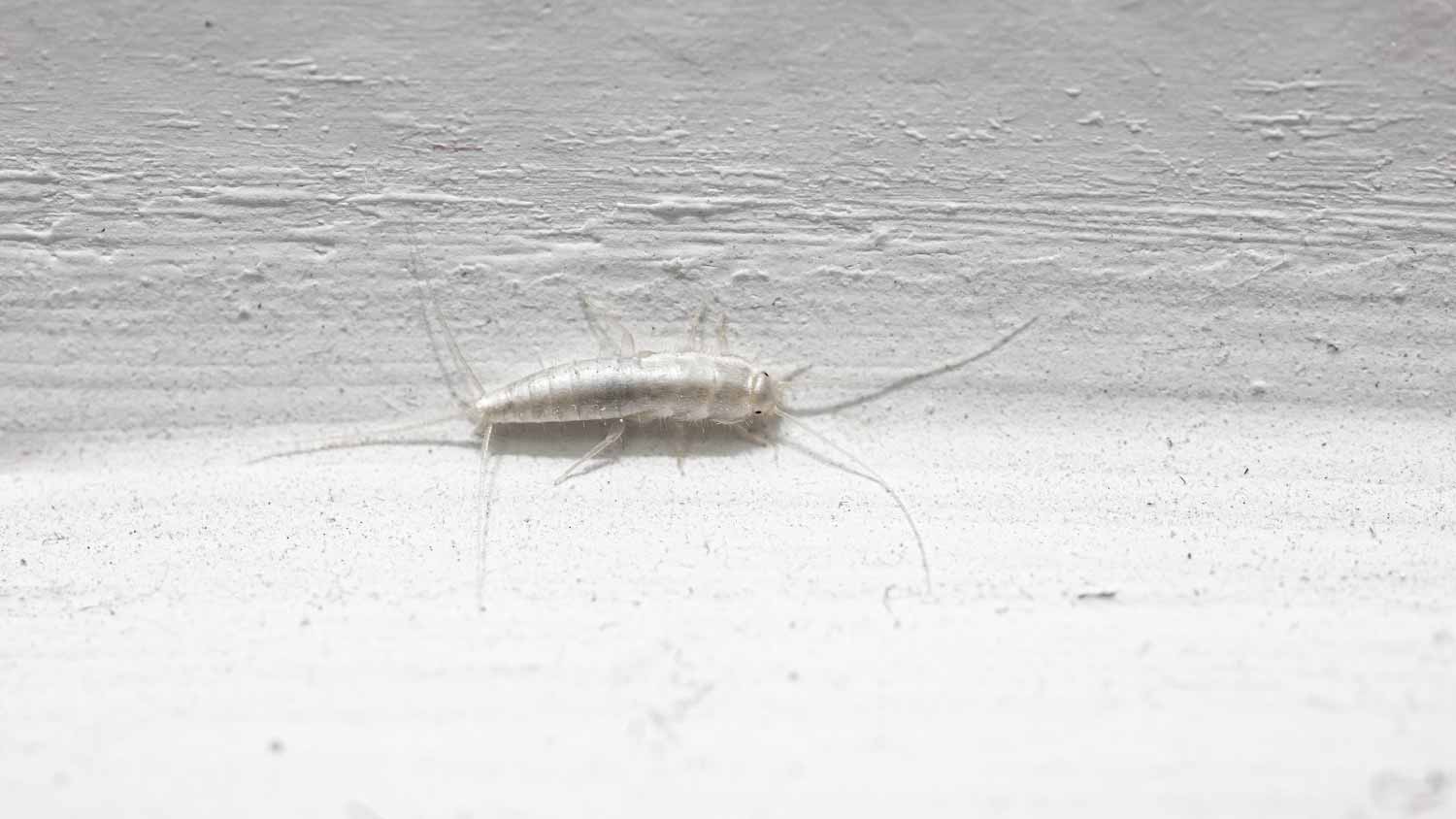
If you have a serious rodent problem, you may need to know the cost of hiring a rat exterminator. We can help you estimate costs in Los Angeles, CA.
With a taste for paper and textiles, silverfish are more pest than guest


Silverfish are small, silver insects found in damp, dark areas.
They feed on paper, fabrics, and glue and cause minor damage.
Silverfish enter homes through cracks and thrive in moisture.
Prevention includes sealing entry points and dehumidifying.
Large infestations of silverfish may require professional help.
If you notice holes in pages of old books and other textiles, these are likely thanks to a small, antennaed insect known as silverfish. While generally harmless, silverfish are considered pests due to their feeding habits and their presence in unexpected places. If you see silverfish in your home, you may have an infestation. Let’s review the signs and removal practices for silverfish.
Silverfish are small insects in the order Zygentoma. Silver or brown with silver-gray scales, they are wingless and tear-shaped with three bristle-like appendages on their backs and long antennae. You can find them in dark, damp areas in your home, such as kitchens and bathrooms, however they climb on most surfaces and fly. They eat paper, fabrics and glue for their starchy consistency.
Silverfish are generally harmless; they cause no real health risk to humans or pets and the damage they cause is relatively minor. When it comes time to get rid of them, you’ll need to use targeted control methods; however, a professional pest control service may be necessary for larger infestations.
Silverfish are nocturnal, tiny and quick. They enter homes through very small cracks, crevices looking for water and food. They sometimes come in on outside materials, like firewood—if you have them inside, there’s always usually an infestation outside.
But what causes silverfish to nest in your home? The need for a hospitable environment with high humidity and poor ventilation in places like bathrooms, kitchens, basements, laundry rooms, gives them the darkness and moisture to survive.
Outside, overgrown weeds and matted-down plant life give them all the sustenance they need. Inside they live on whatever leftover food crumbs and pieces they find in areas you may have overlooked when cleaning as well as starchy non-perishables.

If you see the first signs of silverfish in your home, you can thwart them by following these tips:
Place bait traps in places silverfish like to congregate, such as under sinks and behind toilets. You can purchase silverfish bait traps online or at a local hardware store.
Silverfish can come in through the smallest of areas, so seal your house as much as possible by filling holes, cracks and crevices. You can also caulk or insulate around vents, drains and pipes for extra protection.
Silverfish prefer moisture, so it’s essential to keep areas where they live dry. Take a look at your plumbing—if you have any leaks, hire a plumber to repair and resolve the issue quickly.
Sweep or vacuum dust bunnies and keep floors free of unnecessary items, especially if they are textiles or paper. Keep dust on surfaces at a minimum around your home.
Clean up crumbs, keep trash contained, and empty your trash cans frequently. Keep all food sealed when not in use with plastic bags or airtight containers.
Silverfish do not like the smell of cedar, cinnamon, cloves, or cucumber peels. Spreading these and other natural repellents will keep silverfish at bay. Borax is also a useful natural repellent for silverfish.
If you have a large infestation of silverfish, a professional extermination company near you is the only way to know for sure that you’ll be free of them. These pest control professionals have the right tools, skills, and knowledge to identify the cause of your silverfish problem, remove them, and suggest preventative measures to keep future pests away.
From average costs to expert advice, get all the answers you need to get your job done.

If you have a serious rodent problem, you may need to know the cost of hiring a rat exterminator. We can help you estimate costs in Los Angeles, CA.

The average roach exterminator cost is between $100 and $600, depending on the species, infestation severity, and home size. Read on for a cost breakdown.

Termite damage repair costs can vary greatly based on the damage severity and location. Learn more about the associated costs of this project with our guide.

Mice spread diseases, chew up your electrical wires, and eat anything and everything in your home. Get rid of mice fast, but humanely, with these easy tips.

Cockroaches are drawn to the warmth and darkness provided by appliances. To prevent an infestation, learn how to get roaches out of appliances for good.

Pest inspection costs depend on the type of inspection, location, and other factors. Learn more about how much pest inspections cost with this guide.